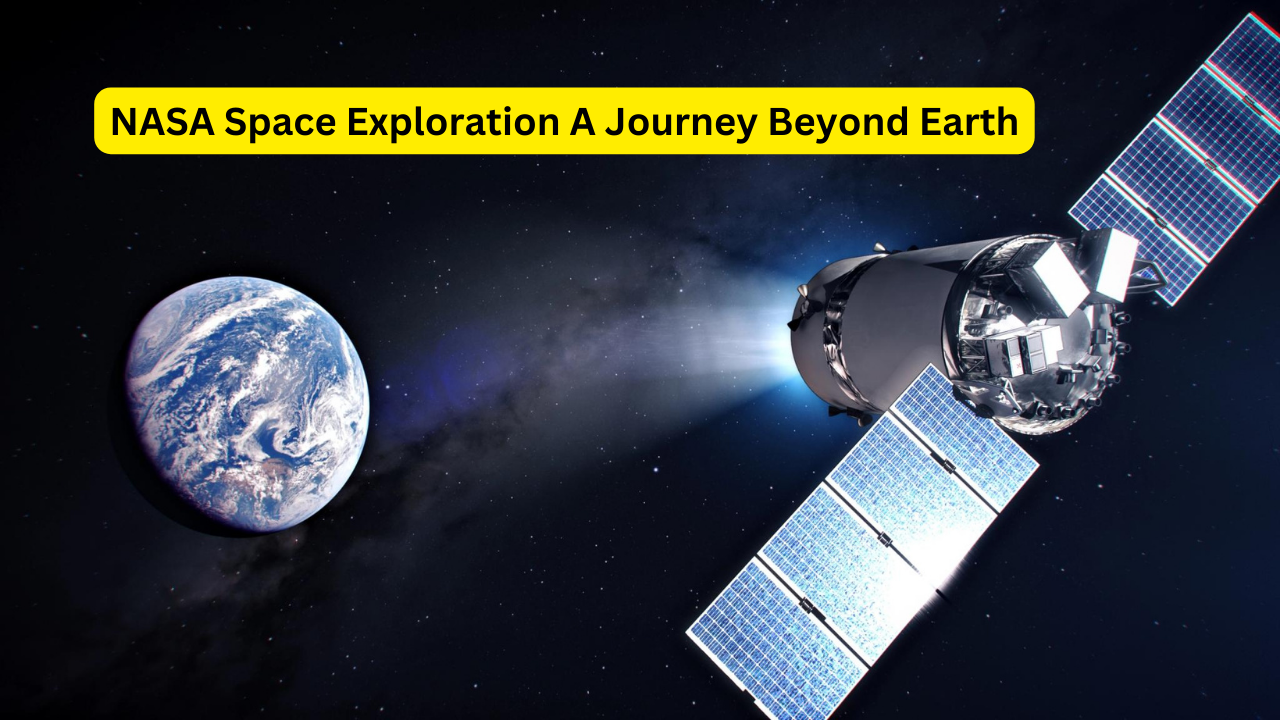NASA Space Exploration A Journey Beyond Earth

NASA space exploration has been a cornerstone of human achievement for decades. From landing on the Moon to exploring the distant reaches of our solar system, NASA’s endeavors have pushed the boundaries of what we know about the universe. In this article, we will delve into the fascinating world of NASA space exploration, highlighting key missions, technological advancements, and the future of space exploration.
The Beginnings of NASA Space Exploration
In 1958, the National Aeronautics and Space Administration (NASA) was established, marking the beginning of an era of unprecedented space exploration. The formation of NASA came in response to the Soviet Union’s successful launch of Sputnik, the world’s first artificial satellite, which ignited the space race. NASA’s early missions focused on understanding the Earth’s atmosphere, space, and developing the technology required for human spaceflight.
The Apollo Program: Giant Leaps for Mankind
The Apollo program is perhaps NASA’s most iconic achievement. The program’s goal was to land humans on the Moon and bring them safely back to Earth. On July 20, 1969, Apollo 11 successfully landed on the Moon, and astronaut Neil Armstrong became the first human to set foot on the lunar surface. His famous words, “That’s one small step for man, one giant leap for mankind,” resonate to this day. The Apollo program not only demonstrated NASA’s ability to achieve ambitious goals but also paved the way for future space exploration missions.
Exploring the Solar System: Pioneer and Voyager Missions
NASA’s exploration of the solar system began with the Pioneer and Voyager missions. Launched in the 1970s, these missions aimed to study the outer planets and beyond. Pioneer 10 and 11 provided the first close-up images of Jupiter and Saturn, while Voyager 1 and 2 went on to explore all four of the outer planets: Jupiter, Saturn, Uranus, and Neptune. The Voyager spacecraft continue to send back data as they travel through interstellar space, far beyond the reaches of our solar system.
Mars Exploration: The Red Planet Beckons
Mars has always been a focal point of NASA’s space exploration efforts. The Viking missions in the 1970s were the first to land spacecraft on Mars and conduct experiments on the Martian surface. In recent years, the Mars rovers—Spirit, Opportunity, Curiosity, and Perseverance—have provided invaluable insights into the planet’s geology, climate, and potential for past life. The Perseverance rover, which landed on Mars in February 2021, is currently conducting groundbreaking research, including the collection of samples for future return to Earth.
The International Space Station: A Global Effort
The International Space Station (ISS) is a symbol of international cooperation in space exploration. Since its launch in 1998, the ISS has served as a microgravity laboratory where astronauts from around the world conduct scientific research. The ISS has provided a unique platform for studying the effects of long-term space travel on the human body, testing new technologies, and fostering collaboration among spacefaring nations.
Technological Innovations: Pushing the Boundaries
NASA’s space exploration efforts have driven numerous technological innovations. From developing the space shuttle—a reusable spacecraft that revolutionized space travel—to creating advanced robotics for planetary exploration, NASA’s technological advancements have had far-reaching impacts. The Hubble Space Telescope, launched in 1990, has transformed our understanding of the universe by providing stunning images and valuable data about distant galaxies, black holes, and other cosmic phenomena.
The Artemis Program: Returning to the Moon
NASA’s Artemis program aims to return humans to the Moon and establish a sustainable presence by the end of the decade. The program is named after Artemis, the Greek goddess of the Moon and twin sister of Apollo. The Artemis missions will utilize the Space Launch System (SLS), the most powerful rocket ever built, and the Orion spacecraft. The goal is to land the first woman and the next man on the lunar surface, paving the way for future missions to Mars and beyond.
Mars Sample Return Mission: Bringing Mars to Earth
One of the most ambitious future missions is the Mars Sample Return mission. In collaboration with the European Space Agency (ESA), NASA plans to collect samples from the Martian surface and return them to Earth for detailed analysis. This mission will provide unprecedented insights into Mars’ geology and potential signs of past life, significantly advancing our understanding of the Red Planet.
The Search for Extraterrestrial Life
The search for extraterrestrial life is a key driver of NASA’s space exploration efforts. Missions like the Kepler Space Telescope have discovered thousands of exoplanets, some of which are located in the habitable zones of their parent stars. The James Webb Space Telescope, set to launch soon, will further enhance our ability to detect and study potentially habitable planets. Understanding whether life exists beyond Earth remains one of the most profound questions in science.
NASA’s Role in Earth Science
While NASA is best known for exploring space, its contributions to Earth science are equally significant. Satellites like Landsat, Terra, and Aqua monitor Earth’s climate, natural disasters, and environmental changes. This data is crucial for understanding and addressing global challenges such as climate change, deforestation, and natural disaster management.
Commercial Partnerships: Expanding Horizons
In recent years, NASA has partnered with private companies like SpaceX and Blue Origin to advance space exploration. These partnerships have led to the development of new spacecraft, such as SpaceX’s Dragon and Starship, which are designed to carry humans to the Moon, Mars, and beyond. Commercial partnerships have not only reduced the cost of space exploration but also accelerated the development of innovative technologies.
The Future of NASA Space Exploration
The future of NASA space exploration is filled with exciting possibilities. With plans to establish a lunar gateway, conduct manned missions to Mars, and explore the outer planets, NASA continues to push the boundaries of what is possible. Advances in technology, international collaboration, and commercial partnerships will play crucial roles in shaping the future of space exploration.
In conclusion, NASA space exploration has transformed our understanding of the universe and our place within it. From the historic Apollo Moon landings to the ongoing exploration of Mars and beyond, NASA’s missions have inspired generations and will continue to do so for years to come.




